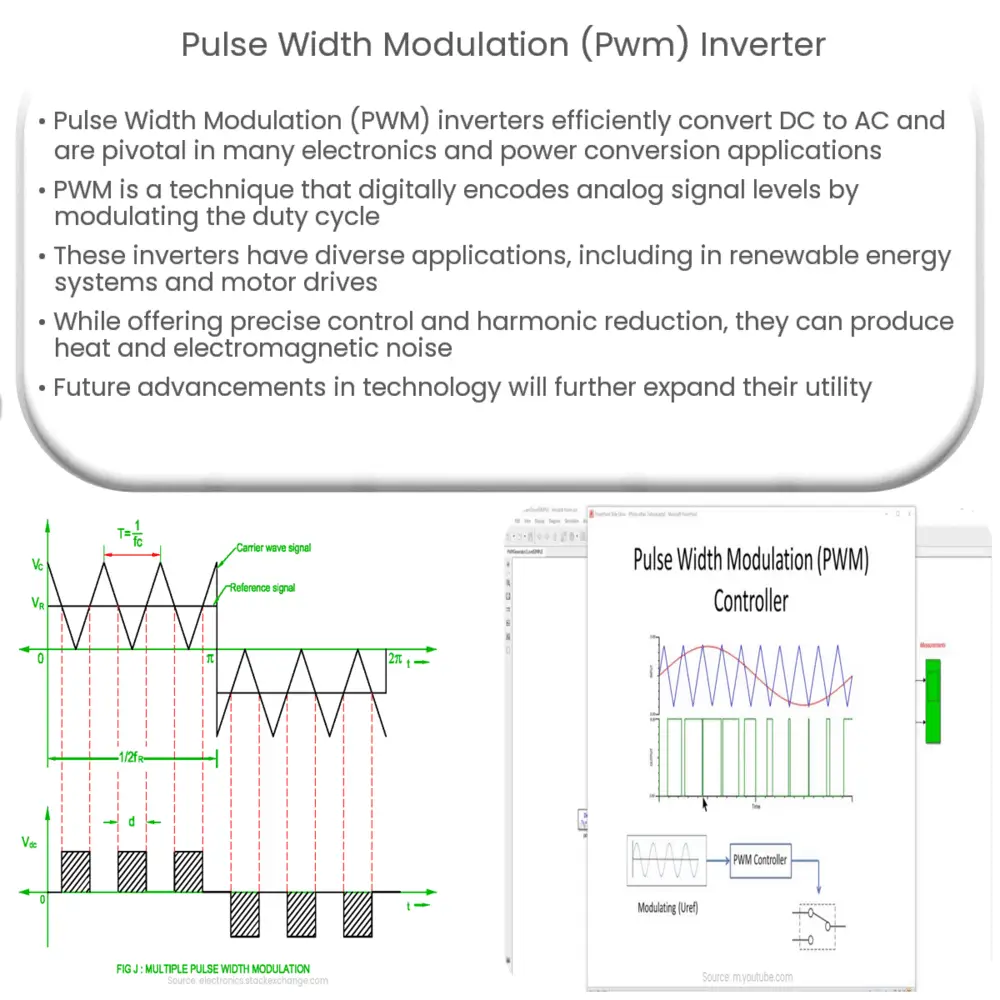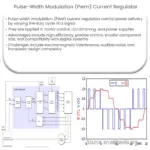Explore the workings of Pulse Width Modulation (PWM) Inverters, their types, benefits, limitations, and their crucial role in future technology.

Pulse Width Modulation (PWM) Inverters: An Overview
When it comes to converting direct current (DC) into alternating current (AC), a significant device utilized in this process is the inverter. One widely used type of inverter is the Pulse Width Modulation (PWM) inverter. This tool has become increasingly popular due to its efficiency, control, and broad application in various domains.
What is Pulse Width Modulation?
Pulse Width Modulation (PWM) is a technique that modifies the duty cycle of a signal to control the amount of power sent to a device. The duty cycle can be defined as the amount of time a signal is ON over an interval or period of time. In simple terms, PWM is a way of digitally encoding analog signal levels. This digital signal is represented by two states: active high (usually represented by ‘1’) and active low (‘0’).
Working Principle of PWM Inverters
PWM inverters operate by taking a DC voltage input and using a switch to produce an output that resembles an AC waveform. The switch is turned on and off at a high frequency. The width of these pulses is modulated to adjust the harmonic content of the output waveform, thus making it more or less like a sine wave, depending on the application.
Types of PWM Inverters
- Single Pulse Width Modulation: In this type, one pulse per half cycle is varied according to the amplitude of a reference signal.
- Multiple Pulse Width Modulation: This type uses multiple pulses in each half cycle, which gives better harmonic content and output waveform.
- Sinusoidal Pulse Width Modulation (SPWM): It’s a common technique where the width of each pulse is varied in proportion to the amplitude of a sine wave.
Applications of PWM Inverters
PWM inverters have a wide range of applications in industrial and electronic fields. They are used in variable frequency drives (VFDs) to control the speed of AC motors by adjusting the frequency and voltage of the electrical power. They’re also used in audio amplifiers, and even in renewable energy systems, where they convert DC power from solar panels or wind turbines into AC power for use in the grid.
Benefits and Limitations of PWM Inverters
There are several advantages associated with the use of PWM inverters. Firstly, they offer excellent harmonic reduction, allowing for smoother output waveforms. This quality is especially important in applications where precise control or high-quality power is necessary, such as sensitive electronics or precision machinery. Secondly, PWM inverters provide better control over output voltage and frequency, enabling precise control over motor speed in VFD applications.
Despite these benefits, there are also certain limitations to be aware of. The high switching frequency of PWM inverters can generate heat and electromagnetic noise. This condition requires careful design to ensure heat dissipation and minimize interference with other electronic devices. Furthermore, they can be more complex and costly to design and manufacture compared to simpler inverter types.
Future of PWM Inverters
As technology continues to advance, the role of PWM inverters is likely to expand. With the growing focus on renewable energy, their ability to efficiently convert DC power to AC will become increasingly vital. Moreover, advancements in semiconductor technology promise even more efficient and compact PWM inverters, broadening their potential applications.
Conclusion
In conclusion, Pulse Width Modulation (PWM) inverters play an essential role in many aspects of electronics and power conversion. Their ability to produce a near-sinusoidal output from a DC input makes them a valuable tool in a wide array of applications, from renewable energy systems to industrial motor drives. Despite certain limitations, ongoing technological advancements promise to further enhance their capabilities and broaden their range of applications. As we continue to strive towards a more energy-efficient future, PWM inverters will undoubtedly play a crucial role in this journey.



